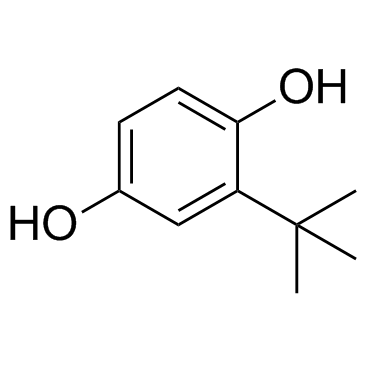KEAP1-Nrf2
The KEAP1-Nrf2 pathway is the major regulator of cytoprotective responses to chemical and/or oxidative stresses caused by reactive oxygen species (ROS) and electrophiles. Nrf2 (nuclear factor erythroid 2-related factor 2) is a transcription factor that binds together with small Maf proteins to the antioxidant response element (ARE) in the regulatory regions of cellular defense enzyme genes leading to the activation of a wide rang of cell defense processes; while KEAP1 (Kelch ECH associating protein 1), a negative repressor of Nrf2, is an adaptor protein for a Cul3-based ubiqutitin E3 ligase that binds to Nrf2 and promotes its degradation by the ubiquitin proteasome pathway.
Products for KEAP1-Nrf2
- Cat.No. Product Name Information
-
GC31691
(+)-DHMEQ
(1R,2R,6R)-Dehydroxymethylepoxyquinomicin; (1R,2R,6R)-DHMEQ
(+)-DHMEQ is an activator of antioxidant transcription factor Nrf2.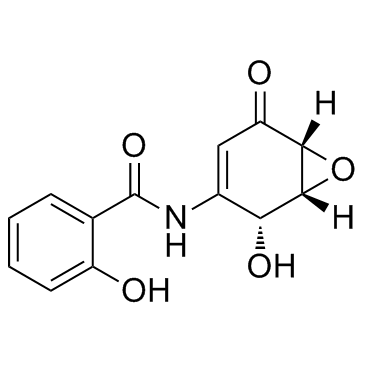
-
GC65610
(R)-5-Hydroxy-1,7-diphenyl-3-heptanone
(R)-5-Hydroxy-1,7-diphenyl-3-heptanone is a diarylheptanoid that can be found in Alpinia officinarum.

-
GC15355
2-Trifluoromethyl-2'-methoxychalcone
Nrf2 activator
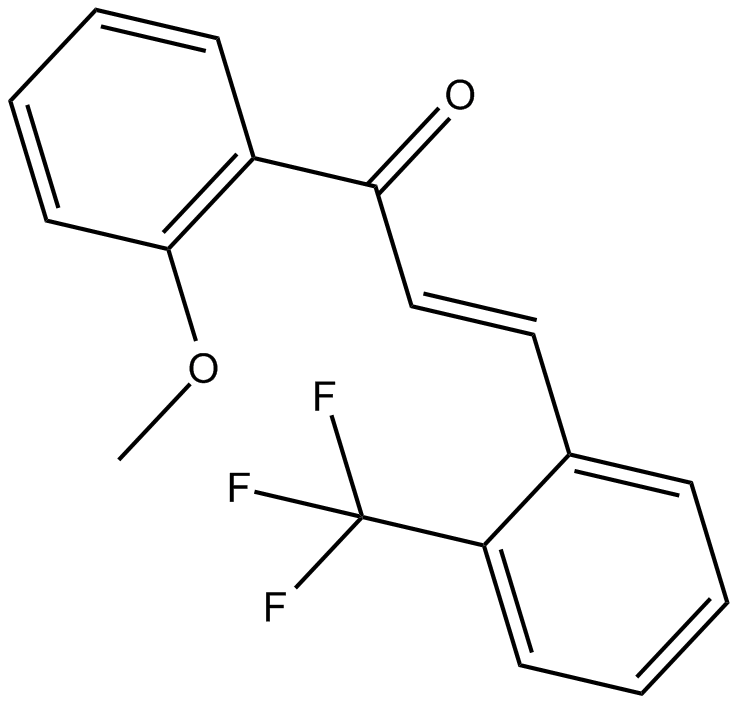
-
GC33815
4-Hydroxyphenylacetic acid
4-HPAA, p-HPAA, para-HPAA, p-Hydroxyphenylacetic Acid, para-Hydroxyphenylacetic Acid, NSC 25066, NSC 27460
A phenolic acid with anti-inflammatory activity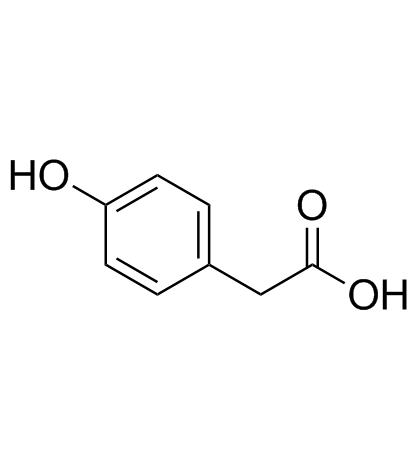
-
GC31648
4-Octyl Itaconate
4-Octyl Itaconate (4-OI) is a cell-permeable itaconate derivative.
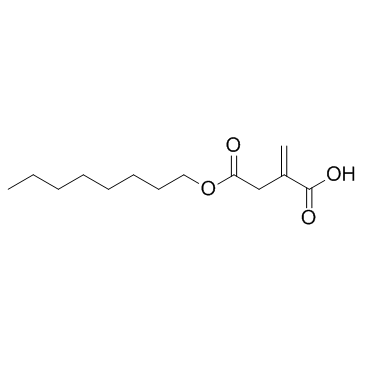
-
GC16120
AI-3
Nrf2/Keap1 and Keap1/Cul3 interaction inhibitor
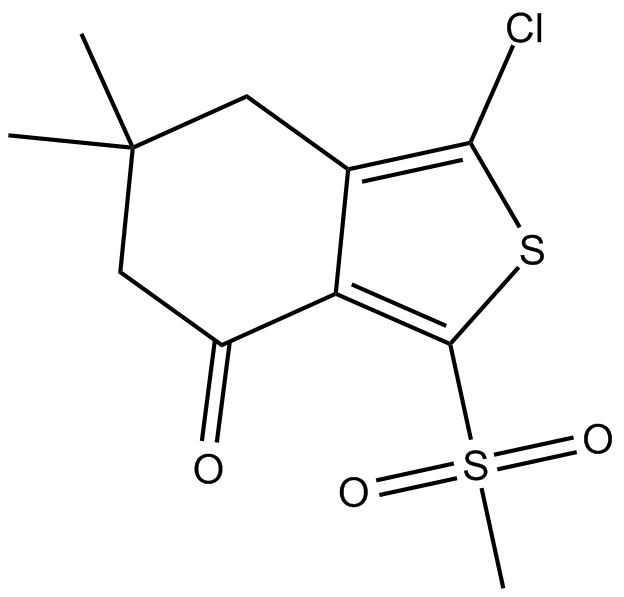
-
GC34070
Brusatol (NSC 172924)
(+)-Brusatol, NSC 172924
Brusatol (NSC 172924) (NSC172924) is a unique inhibitor of the Nrf2 pathway that sensitizes a broad spectrum of cancer cells to Cisplatin and other chemotherapeutic agents. Brusatol (NSC 172924) enhances the efficacy of chemotherapy by inhibiting the Nrf2-mediated defense mechanism. Brusatol (NSC 172924) can be developed into an adjuvant chemotherapeutic agent. Brusatol (NSC 172924) increases cellular apoptosis.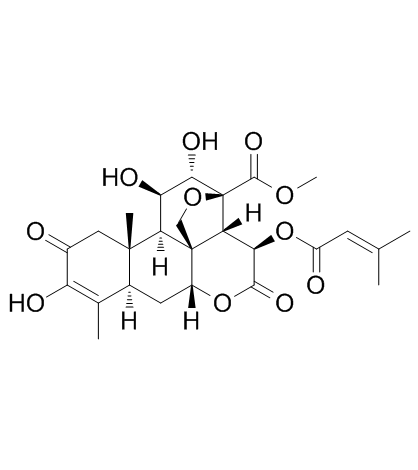
-
GC35629
CDDO-dhTFEA
RTA dh404
CDDO-dhTFEA (RTA dh404) is a synthetic oleanane triterpenoid compound which potently activates Nrf2 and inhibits the pro-inflammatory transcription factor NF-κB.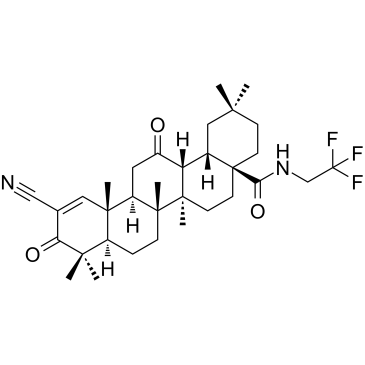
-
GC35630
CDDO-EA
CDDO ethyl amide; TP319; RTA 405
CDDO-EA is an NF-E2 related factor 2/antioxidant response element (Nrf2/ARE) activator.
-
GC32723
CDDO-Im (RTA-403)
CDDO-Imidazolide, RTA 403
CDDO-Im (RTA-403) (RTA-403) is an activator of Nrf2 and PPAR, with Kis of 232 and 344 nM for PPARα and PPARγ.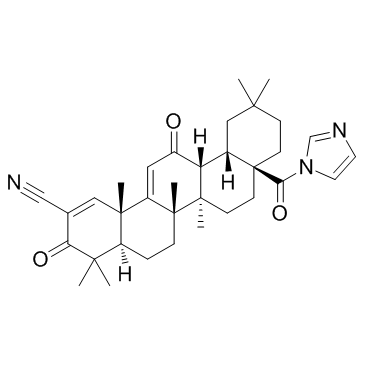
-
GC40226
Curcumin-d6
Curcumin-d6 is intended for use as an internal standard for the quantification of curcumin by GC- or LC-MS.

-
GC64971
DDO-7263
DDO-7263, a 1,2,4-Oxadiazole derivative, is a potent Nrf2-ARE activator.
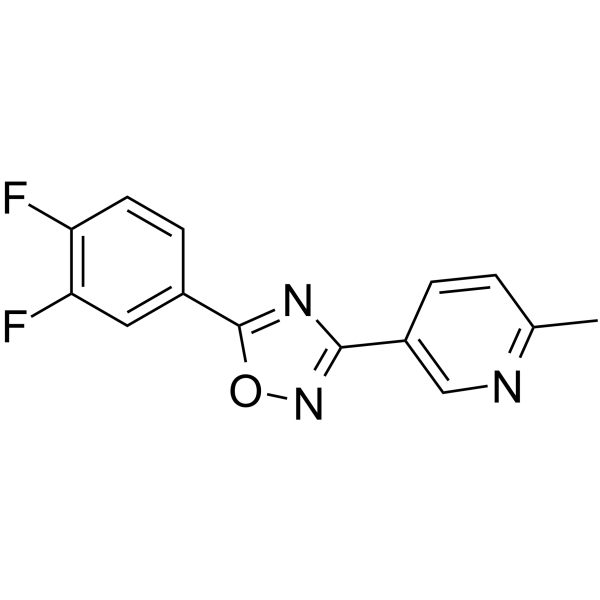
-
GC16590
Dimethyl Fumarate
NSC 25942, NSC 167432, transButenedioic Acid dimethyl ester
nuclear factor (erythroid-derived)-like 2 (Nrf2) pathway activator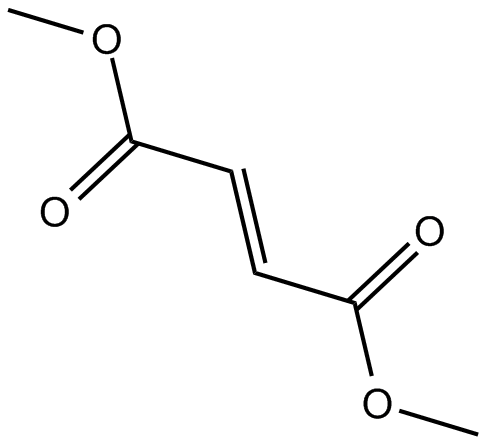
-
GC15605
Ezetimibe
Ezetrol, SCH 58235
Cholesterol transport inhibitor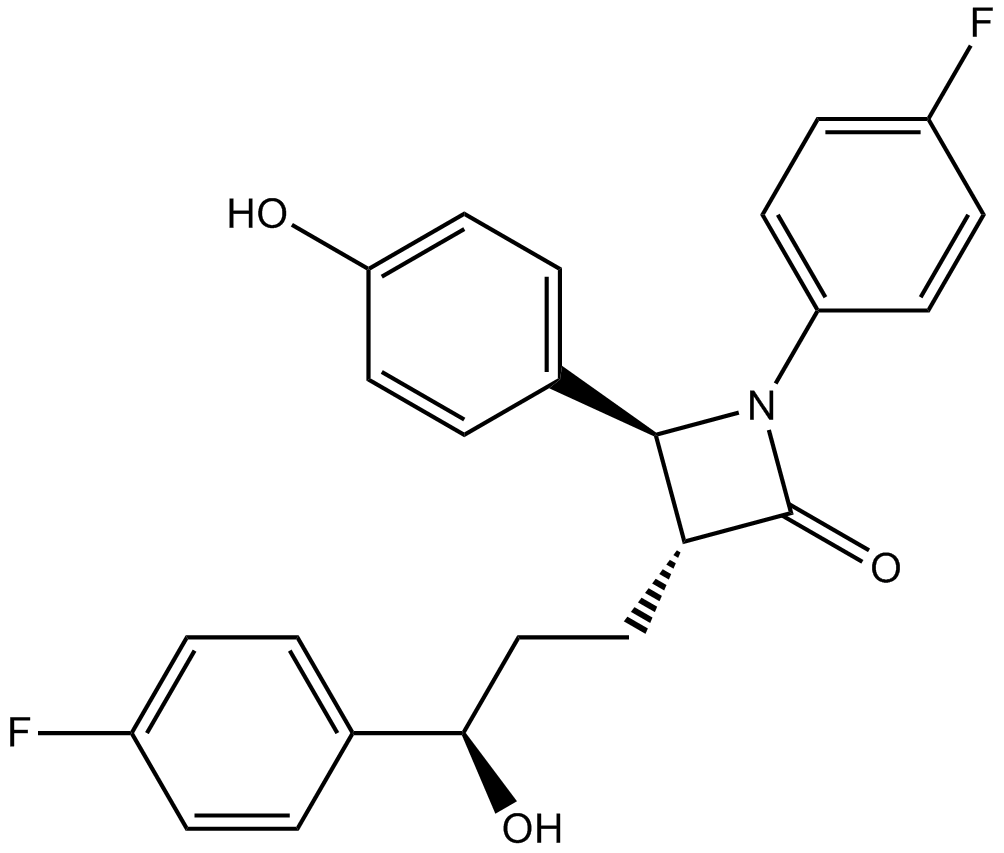
-
GC66354
Ezetimibe-d4-1
SCH 58235-d4-1
Ezetimibe-d4 is deuterium labeled Ezetimibe. Ezetimibe (SCH 58235) is a potent cholesterol absorption inhibitor. Ezetimibe is a Niemann-Pick C1-like1 (NPC1L1) inhibitor, and is a potent Nrf2 activator.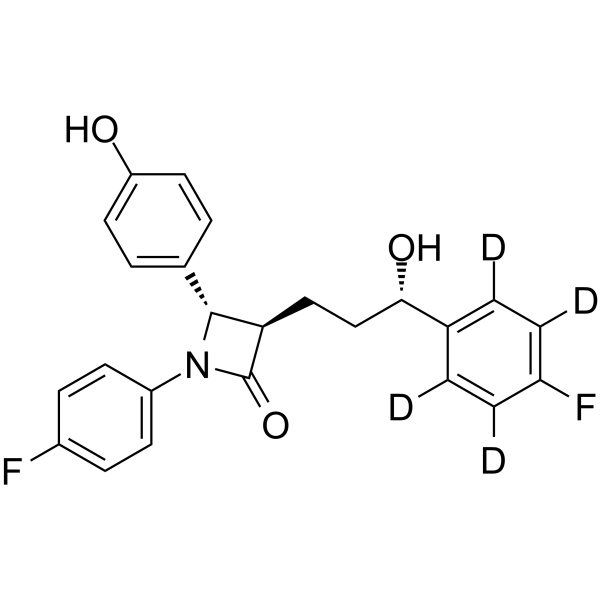
-
GC33092
Hesperin
6-MSITC
An isothiocyanate with diverse biological activities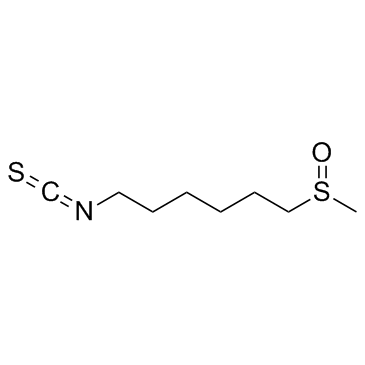
-
GC11302
Hinokitiol
NSC 18804, β-Thujaplicin, 4-isopropyl Tropolone
A tropolone with diverse biological activities
-
GC66004
K67
K67 specifically inhibits the interaction between Keap1 and S349-phosphorylated p62. K67 prevents p-p62 from blocking the binding of Keap1 and Nrf2. K67 effectively inhibits the proliferation of HCC cultures with high cellular S351-phosphorylated p62 by restoring the ubiquitination and degradation of Nrf2 driven by Keap1.
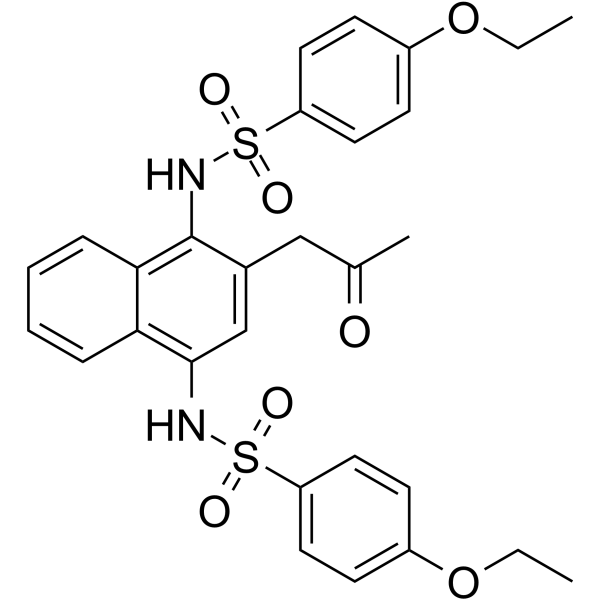
-
GC36390
Keap1-Nrf2-IN-1
Keap1-Nrf2-IN-1 is a Keap1 (Kelch-like ECH-associated protein 1)-Nrf2 (nuclear factor erythroid 2-related factor 2) protein-protein interaction inhibitor, and with an IC50 of 43 nM for Keap1 protein.
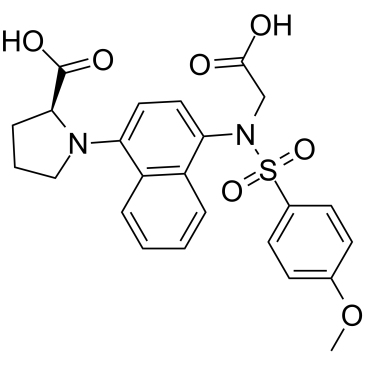
-
GC31321
KI696
KI696 is a high affinity probe that disrupts the Keap1/NRF2 interaction.
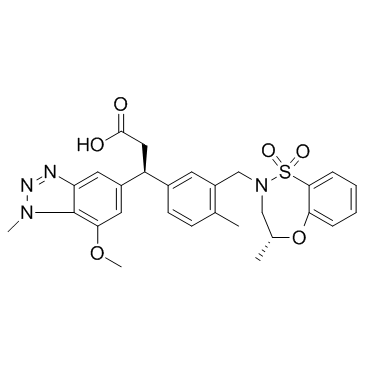
-
GC34642
KI696 isomer
KI696 isomer is the less active isomer of KI696.
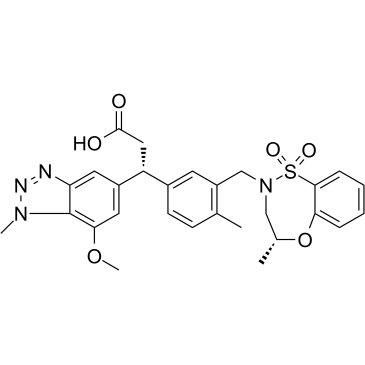
-
GC31783
Methyl 3,4-dihydroxybenzoate (Protocatechuic acid methyl ester)
Methyl 3,4-dihydroxybenzoate (Protocatechuic acid methyl ester) (Protocatechuic acid methyl ester; Methyl protocatechuate) is a major metabolite of antioxidant polyphenols found in green tea.

-
GC38819
ML334
LH601
ML334 is a potent, cell-permeable activator of NRF2.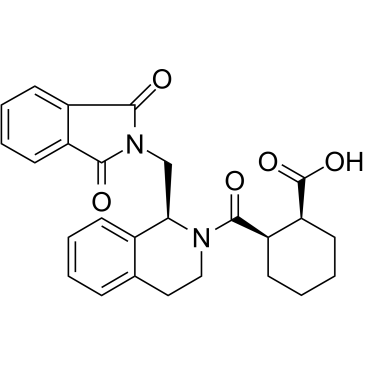
-
GC19254
ML385
ML385 is a specific nuclear factor erythroid 2-related factor 2 (NRF2) inhibitor.
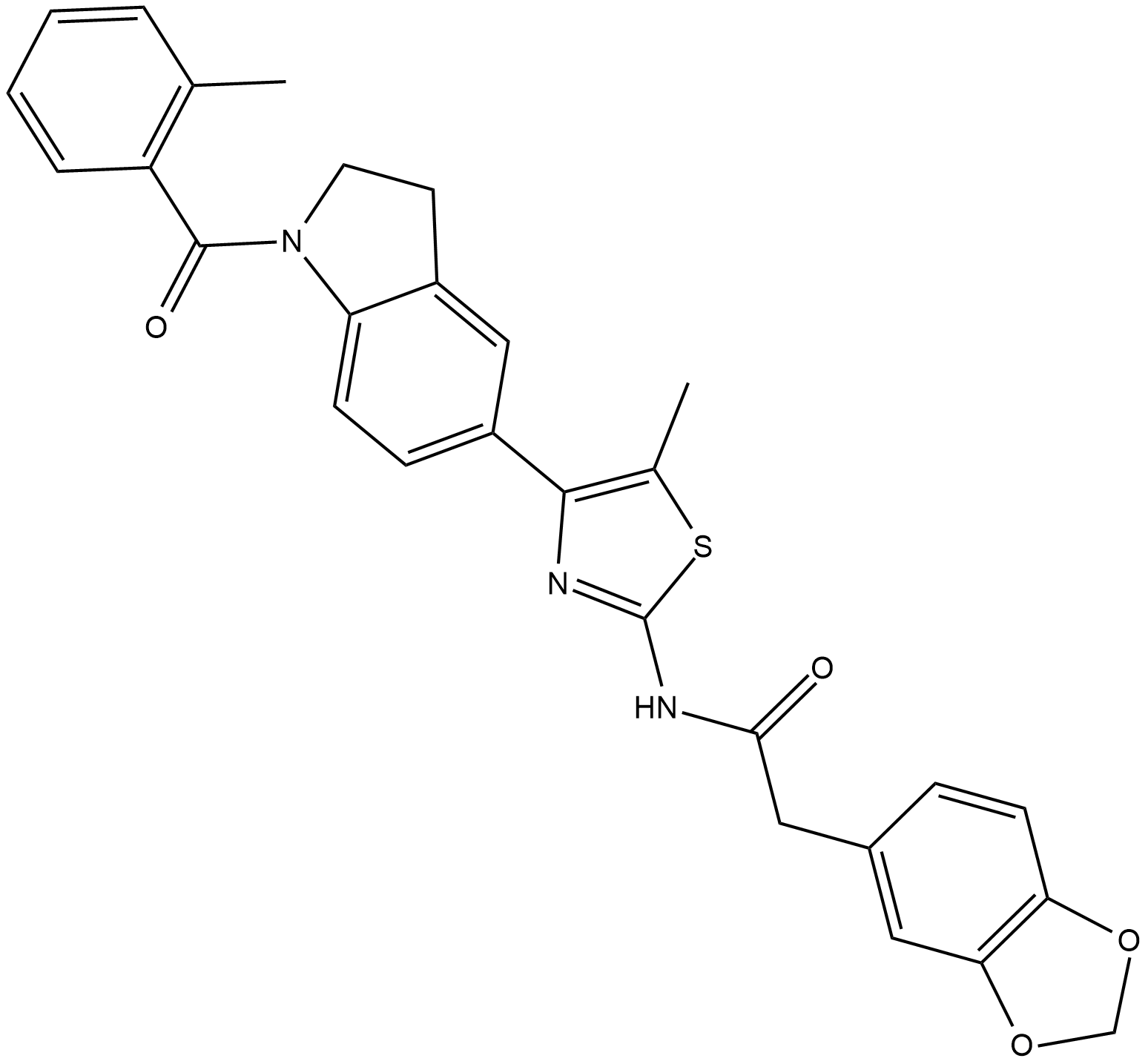
-
GC13058
NK 252
Nrf2 activator
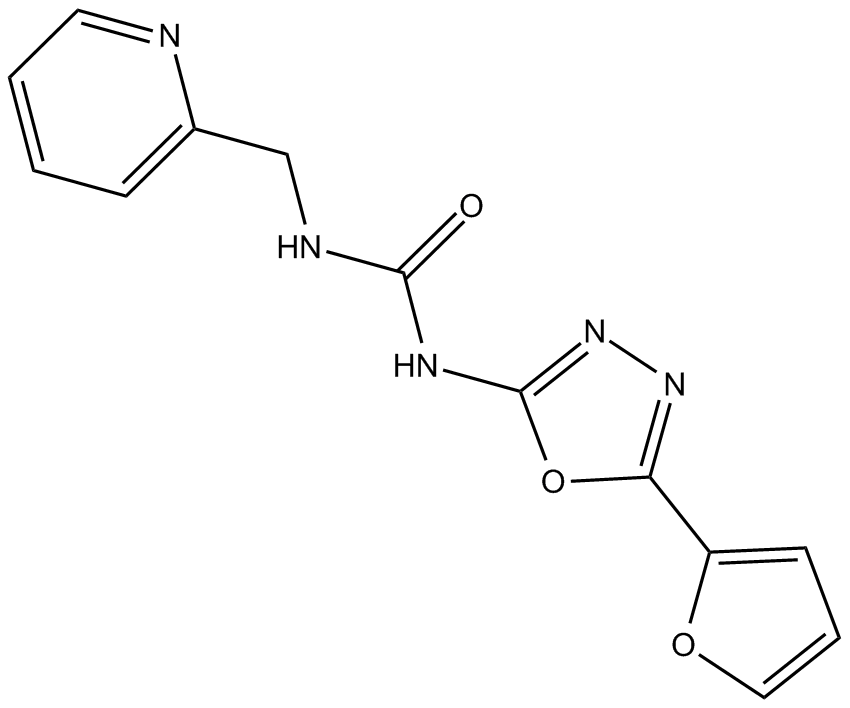
-
GC69590
Nrf2 activator-2
Nrf2 activator-2 (compound O15) is a derivative of sulforaphane, an effective Nrf2 activator with an EC50 of 2.9 μM in 293 T cells. Nrf2 activator-2 effectively inhibits the interaction between Keap1 and Nrf2, thereby showing an activating effect on Nrf2. Nrf2 activator-2 significantly reduces the level of ubiquitinated Nrf2 in cells.
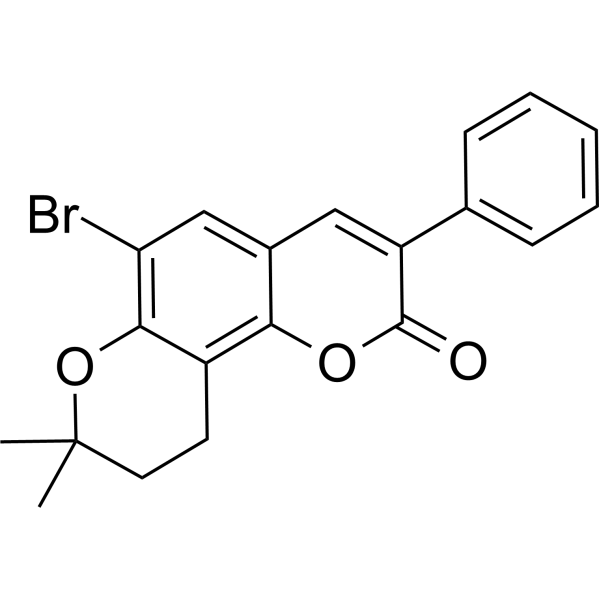
-
GC66054
Nrf2 activator-4
Nrf2 activator-4 (Compound 20a) is a highly potent, orally active Nrf2 activator with an EC50 of 0.63 μM. Nrf2 activator-4 suppresses reactive oxygen species against oxidative stress in microglia. Nrf2 activator-4 effectively recovers the learning and memory impairment in a scopolamine-induced mouse model.
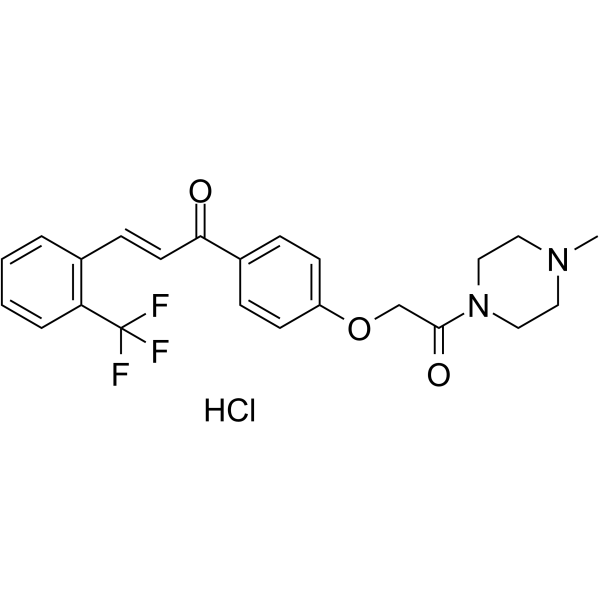
-
GC36773
Nrf2-IN-1
Nrf2-IN-1 is an inhibitor of nuclear factor-erythroid 2-related factor 2 (Nrf2). Nrf2-IN-1 is developed for the research of acute myeloid leukemia (AML).
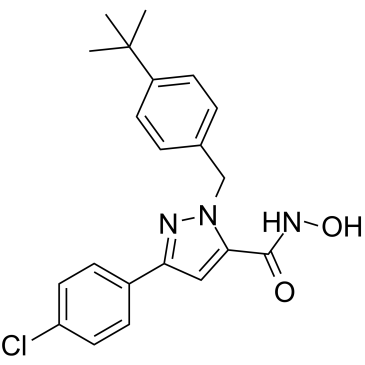
-
GC12821
Oltipraz
NSC 347901, RP 35972
Nrf2 activator;An antischistosomal agent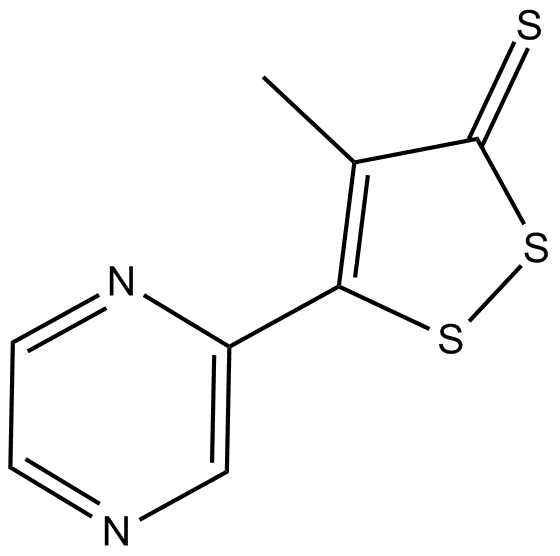
-
GC13693
Omaveloxolone (RTA-408)
Omaveloxolone
Omaveloxolone (RTA-408) (RTA 408) is an antioxidant inflammation modulator (AIM), which activates Nrf2 and suppresses nitric oxide (NO).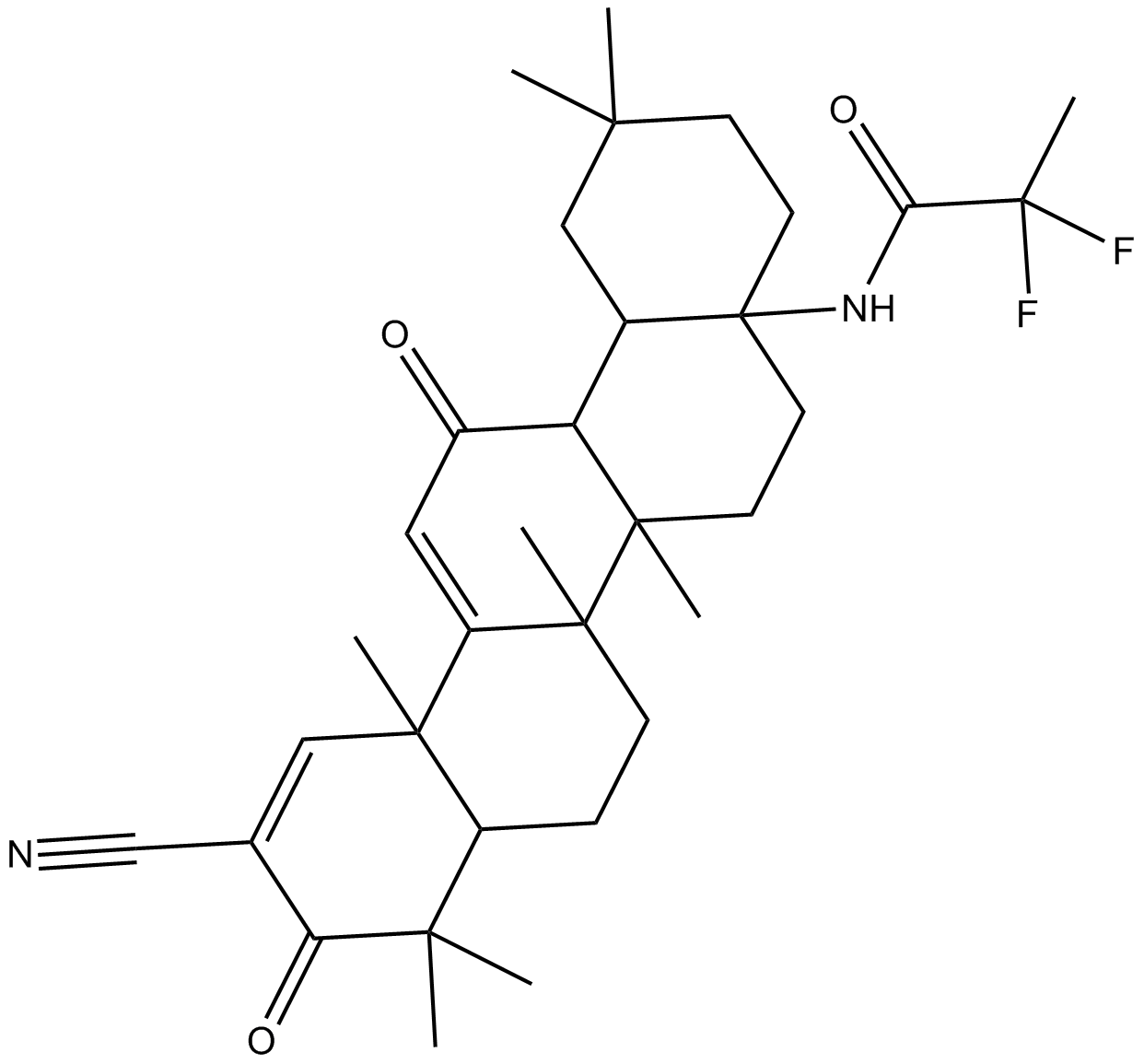
-
GC15457
Pyridoxine
A 4-methanol form of vitamin B6
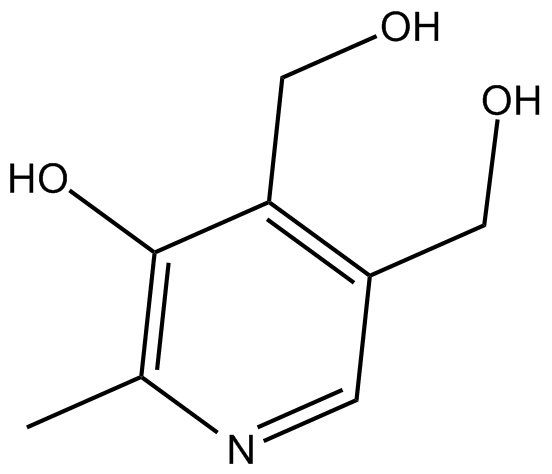
-
GC17393
Pyridoxine HCl
Pyridoxine HCl (Pyridoxol; Vitamin B6) is a pyridine derivative.
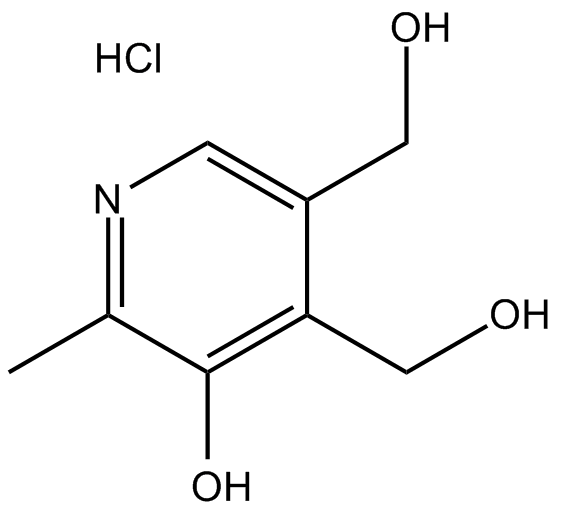
-
GC63933
S-Allylmercaptocysteine
S-allylmercaptocysteine, an organic sulfur compound extracted from garlic, has anti-inflammatory and anti-oxidative effects for various pulmonary diseases.
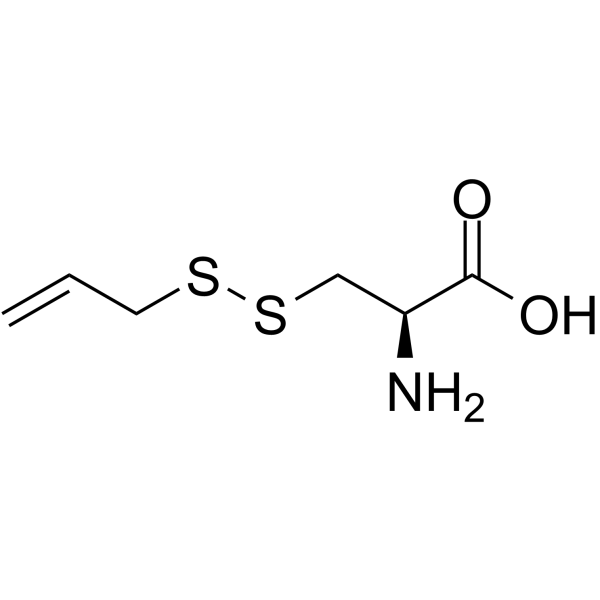
-
GC14352
TAT 14
Nrf2 activator

-
GC34057
TBHQ (tert-Butylhydroquinone)
TBHQ(tert-Butylhydroquinone) is a powerful phenolic antioxidant capable of reducing oxidative stress and inflammatory reactions.
